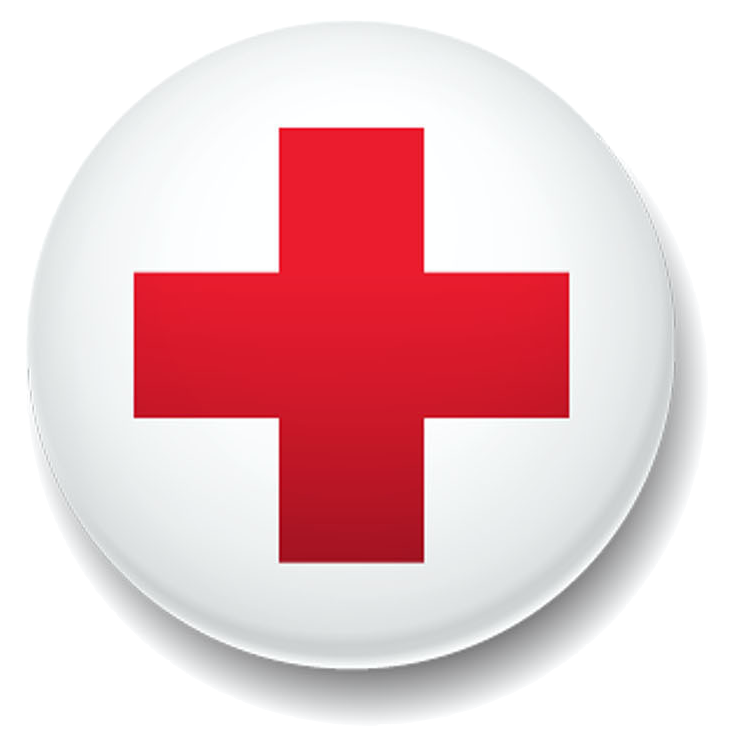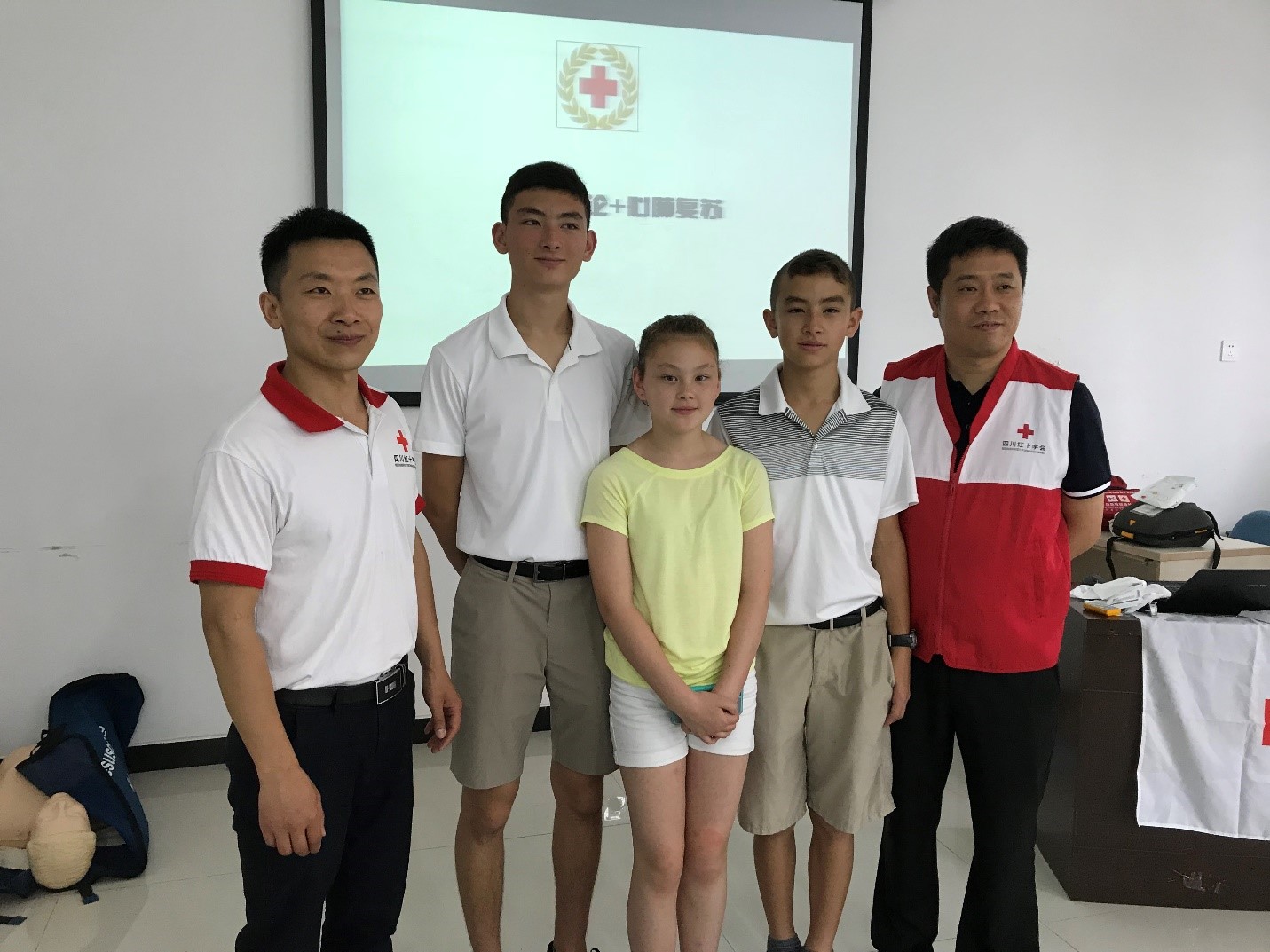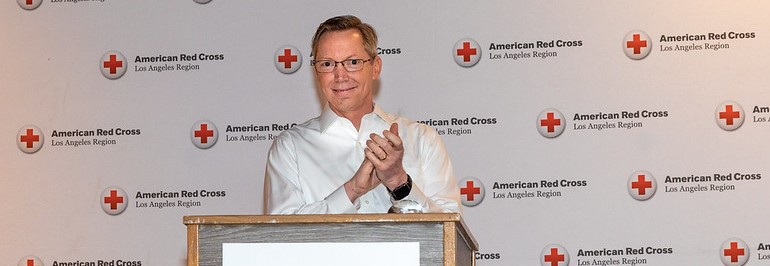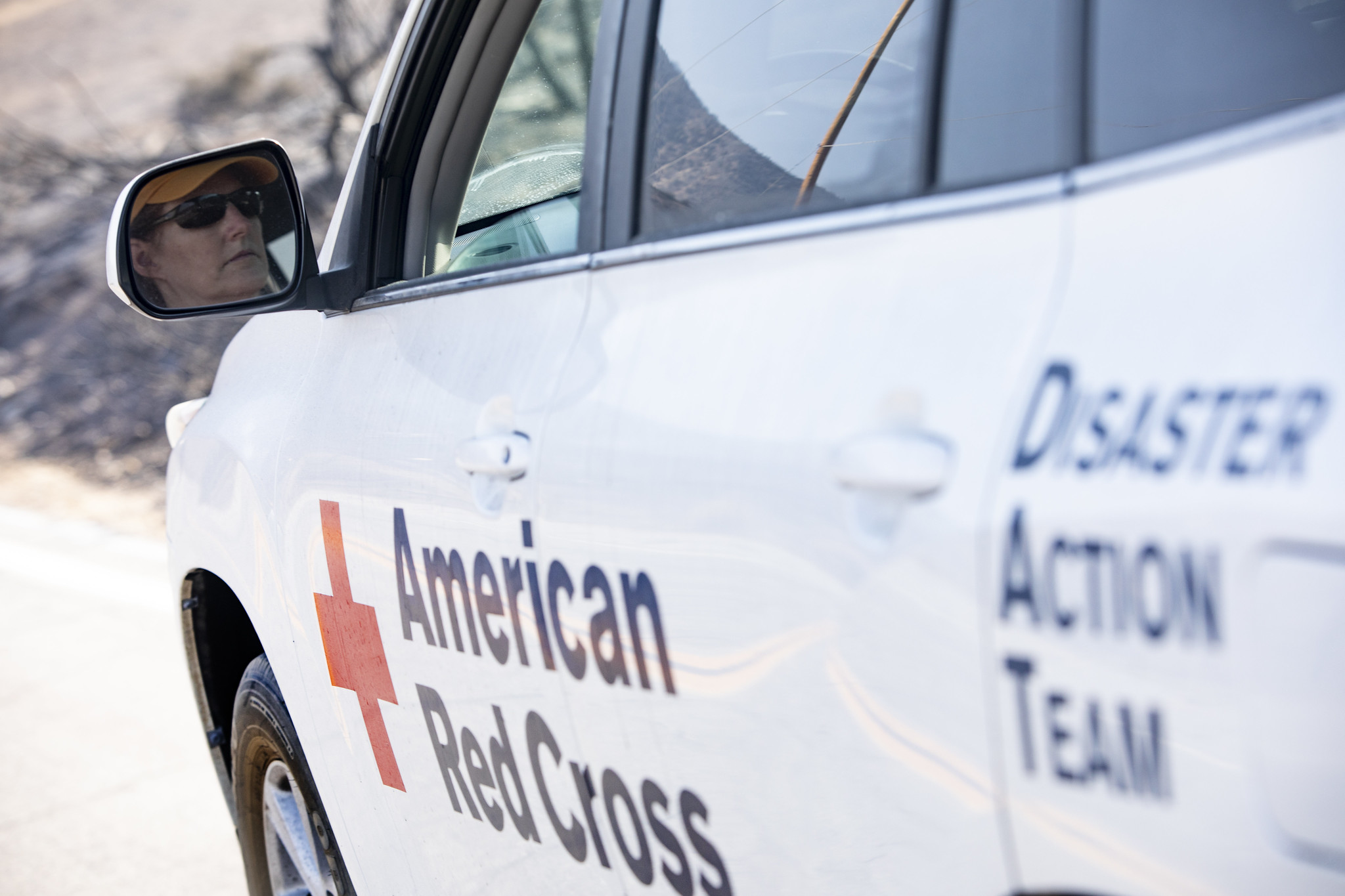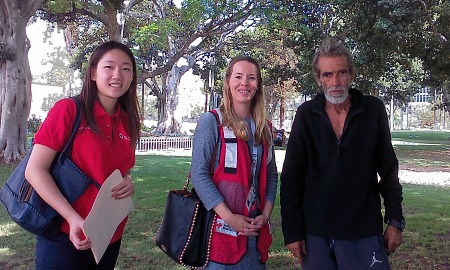Michael Anrei Giordano is the 15 year old grandson of Red Cross Los Angeles Regional Board Member, Liz Giordano. Michael recently visited the Red Cross Society of China during his visit to Sichuan, a province in southwest China. This blog chronicles his journey.
By Michael Anrei Giordano
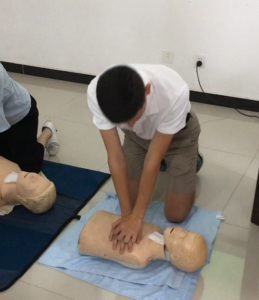 June 23: Red Cross Disaster Readiness Event
June 23: Red Cross Disaster Readiness Event
The magnitude 8.0 Sichuan earthquake of 2008 occurred on May 12, and damaged massive amounts of property, and caused plenty of death and injury.
Ten years later, my mom, brother, sister, and I planned a trip to China in June which included a visit to a disaster readiness program by Sichuan Red Cross in Chengdu, China. The trainers were Red Cross staff, and the students were volunteers preparing for a possible disaster. We arrived at the China Red Cross Chengdu Disaster Readiness and Rescue Center, and very quickly got into the training session. The lesson started off in the morning with CPR. To start, they went through a presentation on the steps of CPR, for instance, a key step, making sure that the patient actually needed CPR. They also went through a brief description on why CPR was necessary, and what the process was to conduct CPR.
It turns out, we realized, that China Red Cross based their readiness system similar to the American Red Cross, and the instructor referenced the readiness of the US and parts of Europe as much more developed than in China. He consistently used examples from the Boston Marathon about how effectively they had responded to the bombings, and how few people died.
The instructor later split the class into three groups, the instructor demonstrating CPR for one group, and the two co-instructors demonstrating for the other two groups. After a couple of demonstrations, the instructors started to ask for volunteers to start practicing CPR. I was among the first to practice, I was able to get the CPR mostly correct, and also memorized the process very quickly. My brother had a harder time, not knowing the Chinese language as well, but my sister, the youngest, learned from our mistakes, and caught on quickly. After thorough review of the process to make sure that everyone was doing it correctly, instruction moved on to the AED, or Automated External Defibrillator. The AED was actually very straight-forward. You apply the two patches in the correct location, and the AED tells you what to do. With that, the morning session ended, and we came back in an hour to continue the afternoon session.
Later that afternoon, we arrived a little late due to traffic, and class had already gotten started with learning first-aid. In China, due to the crowded streets and condensed populations, the medical response time can be slow, and as a result, they believed that it would be important to teach the volunteers first-aid to make sure that they could keep the injured stable and in good condition until the paramedics arrived. First, they taught us about how to slow or stop bleeding, through the application of direct pressure, pressure to an artery (point press), or using a tourniquet. Between the first two, they also taught us about how to handle neck injuries, and RICE, the process you follow for strained and pulled muscles. After showing us the first two, they showed us how to make slings, ace bandages and splints, and after that, how to properly make a tourniquet. The trainers obviously knew what they were doing, they could complete each bandage and sling within 15 seconds, and even knew when it was time to review the CPR class from earlier. One of the tested volunteers got pop quizzed but forgot to check that the dummy needed CPR. I didn’t attend the second day, or get certified, but the agenda had included theory and an exam to see if they were approved for the certificate. I found the trainers to be both lively and humorous and the 30 odd volunteers were also dedicated to the learning, making a very well-put together class. In fact, the trainer was so confident in his training that he had cracked a joke, “Now that you have splinted your arm and put it in the proper sling, you can go bike to the hospital and get it checked out.”
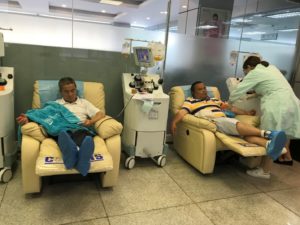 June 26: Bone Marrow Stem Cell Transplant
June 26: Bone Marrow Stem Cell Transplant
We visited the Chengdu military hospital to see one of the volunteers go through the screening process for a Bone Marrow Stem Cell Transplant. It is a very sensitive process in which stem cells from inside the bone marrow are removed from a volunteer and given to a patient suffering from Leukemia. The match rate between volunteer and patient is approximately 1 in 10,000. It means there are only 10 to 20 donors a year. The volunteer had to go through a questionnaire, in which he and all his friends filled a questionnaire, but only he was willing to go through with the process. When we got to the hospital, we waited for a few minutes for him to arrive, before going inside. After we went in, we took the stairs up to the fourth floor. While the Red Cross staff explained the process of the transplant, the volunteer took a blood test, then an ultrasonic scan, urine test, and a general physical exam.
If he passes the tests and finds a match among any of the leukemia patients, he will then move along to the stem cell extraction. The extraction is an exhausting 5-day process in which, once a day, for the first four days, the volunteer will get a shot, which forces the stem cells out of the bone marrow and into the blood stream. The last day they would strap him down to make sure that he wouldn’t disturb the large needles they would insert and extract the stem cells.
For the time that I was there, I was impressed by how determined the volunteer was about contributing to the treatment of curing leukemia, and also, how much time he wouldn’t be in the hospital. After he got the shot, they would have released him, until the shot the next day. At the same time, he would be in quite a bit of pain, due to his stem cells trying to move from inside bone to the blood stream. The volunteer wanted to do it because his parents had gone through some sickness, and he had decided that he would like to contribute to the cure of any disease if he could, which I found to be quite touching. All in all, the process was very eye opening, and I hope that whoever he helps will be able to thank him one day for the time he took to contribute.
June 26: Blood Drive
The Chengdu Blood Center isn’t actually part of the Sichuan Red Cross, but due to Red Cross advocacy, it has been able to provide blood for all of the hospitals in the Chengdu area. Before 2000, there was no blood drive, people would simply sell blood, and some might sell too much to try to feed their families. At the same time, they might transfer some blood diseases that they might have carried. The Chengdu Blood Center is the collector of blood and platelets to the surrounding hospitals.
The Chengdu Blood Center has a very straightforward process, which starts off with a questionnaire. The questionnaire basically asks about activities the volunteer might have done that would make him/her illegible for platelet donation–for instance, tattoos. The volunteer then takes a blood test and physical, and then, if they have a platelet count higher than 150 in the test (we were here to see the platelet extraction) and are healthy in every other sense, they would be approved and would wait for a little bit upstairs. Upstairs, they would have something light to eat and drink, before heading into the two rooms. The first room is for people with a platelet count between 150 and 200, and for people who were simply donating blood. Since we were here for the platelet extraction demonstration, the staff went more in-depth in that subject. In that room, the blood donor would spend 60 to 80 minutes getting one unit of platelets extracted. The other room, for people with a platelet count above 200, extraction took anywhere from 30 to 60 minutes, and could donate up to two units of platelets.
I thought that the setup for the blood center was very neat and built for efficient function. The place looked relatively modern and was also comfortable and sterile at the same time. The nurses checked on the volunteers frequently and did not waste time on anything else. All in all, I think it was a great experience that gave me a great understanding of how the blood center works.
